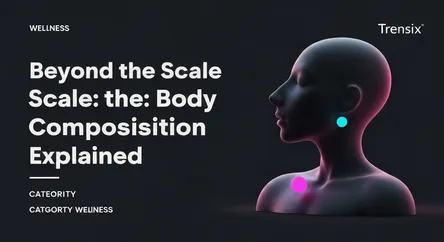Wellness
Beyond the Scale: Body Composition Explained

Discover what body composition is and why it's a better health indicator than weight alone. Learn about your body's fat, muscle, and bone makeup.
What is it?
Body composition describes what the human body is made of, breaking it down into its core components like fat, bone, water, and muscle. Unlike body weight, body composition analysis differentiates between fat mass and fat-free mass (which includes muscle, bones, and organs). This is a crucial distinction because two people with the same height and weight can have very different health and fitness levels based on their unique ratio of fat to muscle.
Why is it trending?
The focus on body composition is growing as people recognize the limitations of traditional health metrics like Body Mass Index (BMI). BMI can be misleading because it doesn't distinguish between muscle, which is dense, and fat. This shift is driven by a desire for a more accurate way to track fitness progress, such as ensuring weight loss comes from fat rather than muscle. Understanding this ratio is now a cornerstone of modern fitness and wellness for creating effective, personalized health plans.
How does it affect people?
A healthy body composition directly impacts long-term well-being. Maintaining a lower percentage of body fat and a higher percentage of muscle mass reduces the risk of chronic diseases, including heart disease, cancer, and type 2 diabetes. It allows individuals to set more meaningful fitness goals and accurately track the effectiveness of their diet and exercise routines. Optimizing body composition can lead to improved metabolic health, higher energy levels, and a greater overall quality of life.